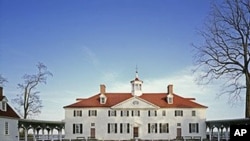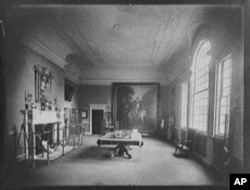It's Spring — prime tourist season in the Washington, D.C., area. But sweltering summer weather will soon arrive along the Potomac River, and America's most famous farmhouse is ready. Mount Vernon, the home of George Washington, the nation's first president, is air-conditioned.
What's so special about that?
The owners of historic properties wrestle with a basic question: Should we preserve our treasure as close as possible to its condition when famous people lived or worked here? After all, we do things like scraping through layers of paint just to find and restore authentic colors from a century or two ago.
Or should we bend our preservationist principles and make the place comfortable for visitors and staff?
The Mount Vernon Ladies' Association — the nation's first preservationist organization that once saved Washington's estate from ruin after the U.S. Civil War — struggled mightily with this dilemma. For years many members opposed any climate-control measures, noting that George and Martha Washington certainly never flipped on an air-conditioning switch. They also worried that the installation of a/c would damage plaster and wallpaper and wood.
When the Mount Vernon Ladies decided to go ahead and put in the cooling system a few years ago, two key staff members resigned in protest. One called the move unethical. But renovation forces won out. Air conditioning would help preserve valuable furniture and musical instruments that heat and humidity were degrading, they argued. And contractors convinced them that vents and ducts and such would be barely noticeable.
So even though Mount Vernon is 211 years old, it's cool.
Literally.














